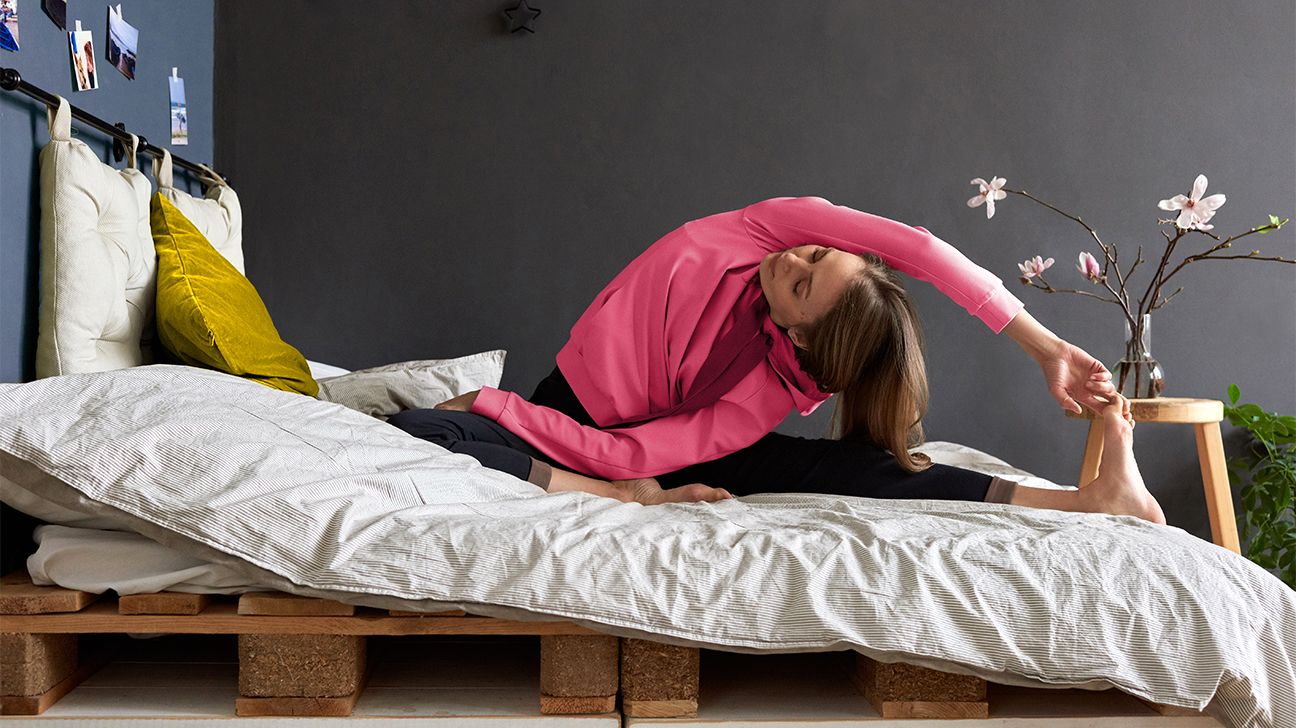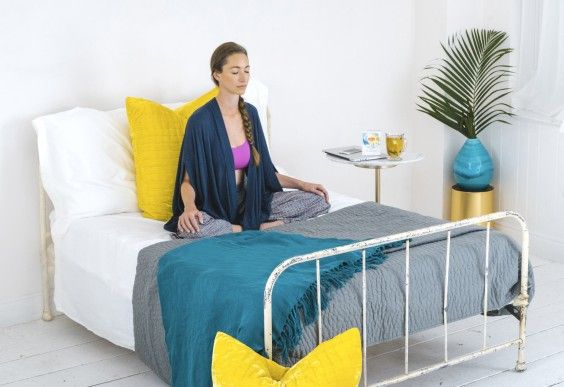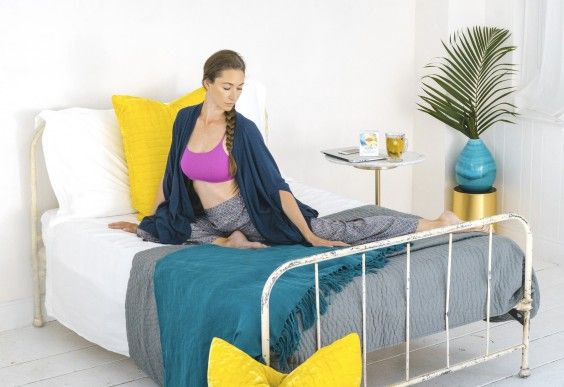Sleep is objectively good. Mmmmm… tasty, tasty sleep. So why are more than one-third of Americans not getting enough of it? And how can yoga help?
Residual anxiety and stress from the day (or the dread of more to come tomorrow) can keep us awake and ruminating into the wee hours of the morning. If you’re lying awake, thinking about that presentation tomorrow, this goes out to you.

And the next morning (when we’ve become the Walking Dead), we’re less productive, more irritable, and more stressed out. It can quickly become a vicious cycle, taking a toll on our physical and mental health.
So how do you get some good shut-eye when your mind just won’t shut off?
Strala Yoga founder Tara Stiles says moving through a few slow, simple poses helps her detach from the day’s chaos and focus on her body and breath. “We’re busy all day with computers and screens, right up to the last minute, so it’s a great way to come back to your breath and your body,” she says.
Her bedtime yoga sequence, created in partnership with Lipton Wellness, includes four easy poses you can do from your bed (we’re not kidding!), designed to help release tension in your lower back and hips.
And while your weekly studio classes probably encourage you to focus on form, Stiles’s flow is all about getting your body to a place that feels most comfortable to you.
Get comfy: The more you enjoy your flow, the more likely you are to stick with it. Swap leggings for your favorite PJ pants (we won’t judge) and throw an extra-thick blanket on the bed to really ramp up the fuzz factor.
Do these poses in order, holding each pose on each side for 30 seconds, or however long feels right for your body.
This routine will help you stop counting sheep and start posing like a pigeon.
1. Seated Meditation (Sukhasana)
Meditation is great for helping you reconnect with your mind and body after a long day.
- Sit with back straight and legs out in front of you.
- Bend your knees inward, placing each foot underneath the opposite knee.
- Sit tall to create length in your torso, placing hands on knees with palms facing down.
- Close your eyes and breathe into your belly.
2. Seated Side Stretch (Parsva Sukhasana)
Stretch out those sides before beddy-byes.
- Extend both legs wide in front of you.
- Bend right leg at the knee and bring right foot toward your groin.
- Bring left arm to touch the bed so it’s parallel to your left leg, with palm facing up.
- Reach up with right arm to open up the right side of your body.
- Repeat on the left side.
3. Pigeon (Kapotasana)
This move will coo you gently to sleep.
- Start in tabletop position, placing hands and knees flat on the bed, hips-width apart.
- Bring right knee between your hands and inch right foot closer to left hand
- Extend left leg fully behind you so left knee and foot are touching the bed.
- Try to square your hips and lift up through your torso to lengthen and stretch.
4. Lying-Down Twist (Natrajasana)
No, “lying-down twist” is not a euphemism for sex. It sure can loosen up your lower back, though.
- Lie on your back with arms extended outward. Bend knees and bring feet toward hips.
- Slowly twist your legs and hips to the right, so right knee is touching the bed.
- Place right hand gently on left knee to stretch and open up your left side.
- Repeat on the opposite side.
Poses aren’t just for your waking hours — your sleeping position also matters. But this pose can help you with sciatica at all hours of the day.
A 2020 review of 19 studies (and 1,832 participants) found that people who do yoga have improved sleep quality. In most of these studies, results showed that the amount of time a person spent in yoga class correlated to how well they slept.
(The researchers did, however, suggest that people in the groups who were not experiencing menopause or living with breast cancer stood to gain the most significant sleep benefits from yoga.)
This seems to apply all the way through life — a 2013 study on the effects of yoga on sleep in older adults found that it boosted their snooze time significantly.
The study looked at folks who did yoga regularly rather than just before bed, but the results are a powerful indicator that this ancient art form still packs a punch in the relaxation stakes.
How does it stack up against other forms of exercise? Surely any exercise will help you catch some serious Zzz’s, right?
Well, a 2017 study on people with type 2 diabetes compared the sleep-supporting effects of yoga to those of aerobics. The researchers found a clear winner in yoga.
These studies and reviews suggest that practicing yoga at any point in the day can boost sleep in the long run.
While there’s not much research on doing yoga right before bed, it might help you relax, allow you to put stress and anxiety aside, and help soothe chronic and acute pain so you can drift off more easily.
Yoga has a whole bunch of benefits, but its ability to relax you can help in those moments when sleep seems a million miles away.
Move through these four poses and prepare for a good night’s shut-eye.
If you’re new to yoga, here are the basic poses to help you get comfortable.





